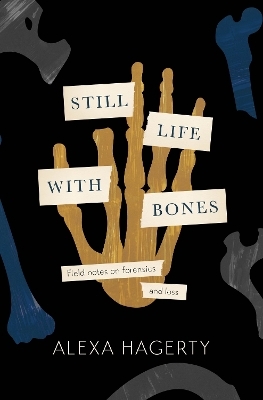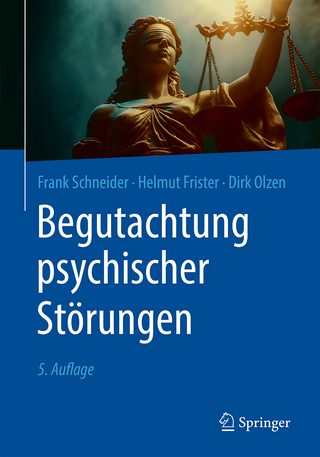
Still Life with Bones: A forensic quest for justice among Latin America’s mass graves
CHOSEN AS ONE OF THE BEST BOOKS OF 2023 BY FT READERS AND THE NEW YORKER
Seiten
2023
Wildfire (Verlag)
978-1-4722-9578-1 (ISBN)
Wildfire (Verlag)
978-1-4722-9578-1 (ISBN)
A forensic anthropologist from the University of Cambridge travels to Latin America to excavate the mass graves of 'the disappeared' and reunite bodies with their loves ones.
ONE OF THE NEW YORKER'S BEST BOOKS OF 2023 SO FAR
CHOSEN BY FINANCIAL TIMES' READERS' FOR BEST BOOKS OF 2023
A NEW YORK TIMES BOOKS EDITOR' S CHOICE
'Essential reading as a human.' - Alex Marzano-Lesnevich
'Chilling and vital. . . sensitive and thought-provoking.' - The Times
An anthropologist working with forensic teams and victims' families to investigate crimes against humanity in Latin America explores what science can tell us about the lives of the dead in this haunting account of grief, the power of ritual, and a quest for justice.
"Exhumation can divide brothers and restore fathers, open old wounds and open the possibility of regeneration-of building something new with the pile of broken mirrors that is loss and mourning."
Over the course of Guatemala's thirty-year armed conflict -the longest ever in Central America-over 200,000 people were killed. During Argentina's military dictatorship in the seventies, over 30,000 people were disappeared. Today, forensic anthropologists in each country are gathering evidence to prove atrocities and seek justice. But these teams do more than just study skeletons-they work to repair families and countries torn apart by violence.
In Still Life with Bones, anthropologist Alexa Hagerty learns to see the dead body with a forensic eye. She examines bones for evidence of torture and fatal wounds-hands bound by rope, cuts from machetes-but also for signs of a life lived: to articulate how life shapes us down to the bone. A weaver is recognized from the tiny bones of the toes, molded by years of kneeling before a loom; a girl is identified alongside her pet dog. In the tenderness of understanding these bones, Hagerty discovers how exhumation serves as a ritual in the naming and placement of the dead, and connects ancestors with future generations. She shows us how this work can bring meaning to families dealing with unimaginable loss, and how its symbolic force can also extend to entire societies in the aftermath of state terror and genocide. Encountering the dead has the power to transform us, making us consider each other, our lives, and the world differently.
Weaving together powerful stories about investigative breakthroughs, grieving families, histories of violence, and her own forensic coming of age, Hagerty crafts a moving portrait of the living and the dead.
"Touching, but achingly honest - a most amazing account of training as a forensic anthropologist. When Hagerty talks about "lives being violently made into bones," I defy you not to be moved. The text is unflinching, but then the crimes and the victims deserve nothing less. I guarantee this will make you think long and hard about cruelty and human rights and the dedication and humanity of the forensic scientist." - Sue Black, author of All That Remains
ONE OF THE NEW YORKER'S BEST BOOKS OF 2023 SO FAR
CHOSEN BY FINANCIAL TIMES' READERS' FOR BEST BOOKS OF 2023
A NEW YORK TIMES BOOKS EDITOR' S CHOICE
'Essential reading as a human.' - Alex Marzano-Lesnevich
'Chilling and vital. . . sensitive and thought-provoking.' - The Times
An anthropologist working with forensic teams and victims' families to investigate crimes against humanity in Latin America explores what science can tell us about the lives of the dead in this haunting account of grief, the power of ritual, and a quest for justice.
"Exhumation can divide brothers and restore fathers, open old wounds and open the possibility of regeneration-of building something new with the pile of broken mirrors that is loss and mourning."
Over the course of Guatemala's thirty-year armed conflict -the longest ever in Central America-over 200,000 people were killed. During Argentina's military dictatorship in the seventies, over 30,000 people were disappeared. Today, forensic anthropologists in each country are gathering evidence to prove atrocities and seek justice. But these teams do more than just study skeletons-they work to repair families and countries torn apart by violence.
In Still Life with Bones, anthropologist Alexa Hagerty learns to see the dead body with a forensic eye. She examines bones for evidence of torture and fatal wounds-hands bound by rope, cuts from machetes-but also for signs of a life lived: to articulate how life shapes us down to the bone. A weaver is recognized from the tiny bones of the toes, molded by years of kneeling before a loom; a girl is identified alongside her pet dog. In the tenderness of understanding these bones, Hagerty discovers how exhumation serves as a ritual in the naming and placement of the dead, and connects ancestors with future generations. She shows us how this work can bring meaning to families dealing with unimaginable loss, and how its symbolic force can also extend to entire societies in the aftermath of state terror and genocide. Encountering the dead has the power to transform us, making us consider each other, our lives, and the world differently.
Weaving together powerful stories about investigative breakthroughs, grieving families, histories of violence, and her own forensic coming of age, Hagerty crafts a moving portrait of the living and the dead.
"Touching, but achingly honest - a most amazing account of training as a forensic anthropologist. When Hagerty talks about "lives being violently made into bones," I defy you not to be moved. The text is unflinching, but then the crimes and the victims deserve nothing less. I guarantee this will make you think long and hard about cruelty and human rights and the dedication and humanity of the forensic scientist." - Sue Black, author of All That Remains
Alexa Hagerty is an anthropologist, researcher, and scholar of science, technology, and society. She holds a PhD from Stanford and is an associate fellow at the University of Cambridge. Her research has received honours and funding from the National Science Foundation, the Mellon Foundation, and the American Ethnological Society, among others. She has written for The Los Angeles Review of Books, Wired, Social Anthropology, and Palais de Tokyo.
| Erscheinungsdatum | 07.03.2023 |
|---|---|
| Verlagsort | London |
| Sprache | englisch |
| Maße | 152 x 232 mm |
| Gewicht | 400 g |
| Themenwelt | Literatur ► Biografien / Erfahrungsberichte |
| Literatur ► Essays / Feuilleton | |
| Sachbuch/Ratgeber ► Natur / Technik | |
| Medizin / Pharmazie ► Medizinische Fachgebiete ► Medizinethik | |
| Studium ► 2. Studienabschnitt (Klinik) ► Rechtsmedizin | |
| Naturwissenschaften ► Biologie ► Humanbiologie | |
| Sozialwissenschaften ► Ethnologie | |
| ISBN-10 | 1-4722-9578-1 / 1472295781 |
| ISBN-13 | 978-1-4722-9578-1 / 9781472295781 |
| Zustand | Neuware |
| Informationen gemäß Produktsicherheitsverordnung (GPSR) | |
| Haben Sie eine Frage zum Produkt? |
Mehr entdecken
aus dem Bereich
aus dem Bereich
Befunderhebung, Rekonstruktion, Begutachtung
Buch | Hardcover (2024)
Springer (Verlag)
CHF 279,95


